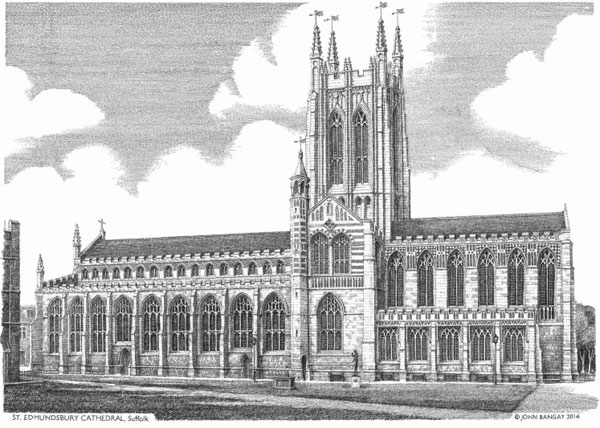St. Edmundsbury Cathedral movie is in progress…
St. Edmundsbury Cathedral, and its town, is named after Edmund the Martyr, the Christian king of East Anglia, murdered by Danish invaders in AD 869. Edmund’s body was rescued by monks, according to legend, by a howling wolf, which showed the monks where to find Edmund’s decapitated head in a bush. A statue of St Edmund, by the sculptor, Elizabeth Frink, stand in the cathedral grounds, and nearby is a symbol of the wolf.

St. Edmund’s body was preserved in a shrine and rapidly became a place of pilgrimage from all over Britain and further afield. The Abbey of Bury St Edmunds became rich with pilgrim donations, gifts and bequests of land and property. The Abbott of Bury himself became a powerful figure in church and state politics. At one time the abbey was the third richest in England but this all came to an abrupt end when Henry VIII dissolved the monasteries in 1539 and The Abbey buildings were mostly sold off or dismantled. The extensive ruins in the Abbey gardens give an idea of how great the Abbey had been.
St.Edmundsbury Cathedral was originally St James’s, one of the three Abbey churches and was re-consecrated as a cathedral in 1914. The nearby St. Mary’s church contains the tomb of Mary Tudor, Queen of France and sister to Henry VIII. John Reeve, the last Abbott, dismissed by Henry, is also buried here. Its Nave, at 213 feet, is the longest of any English parish church. The third abbey church, St. Margaret’s, was demolished.

